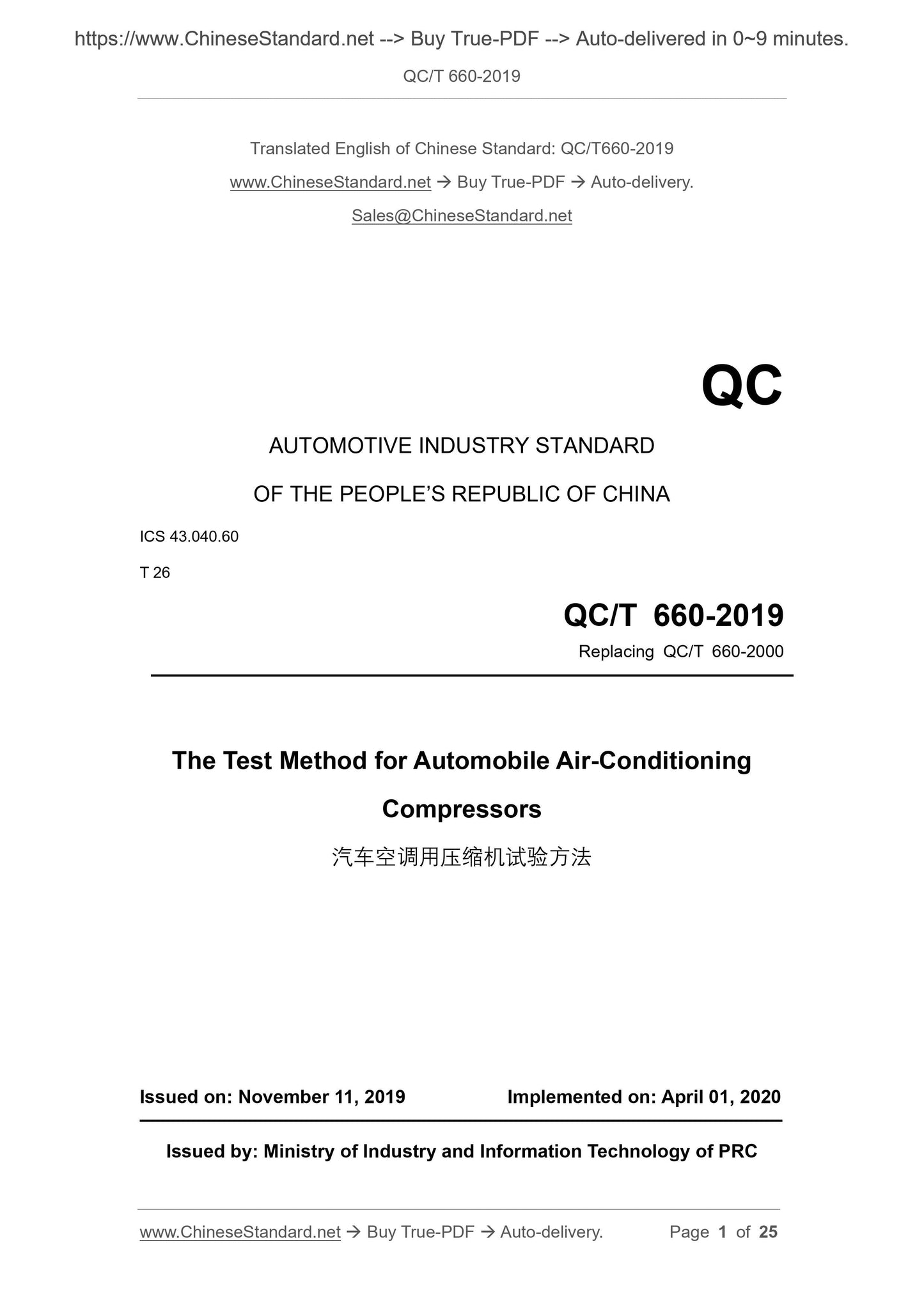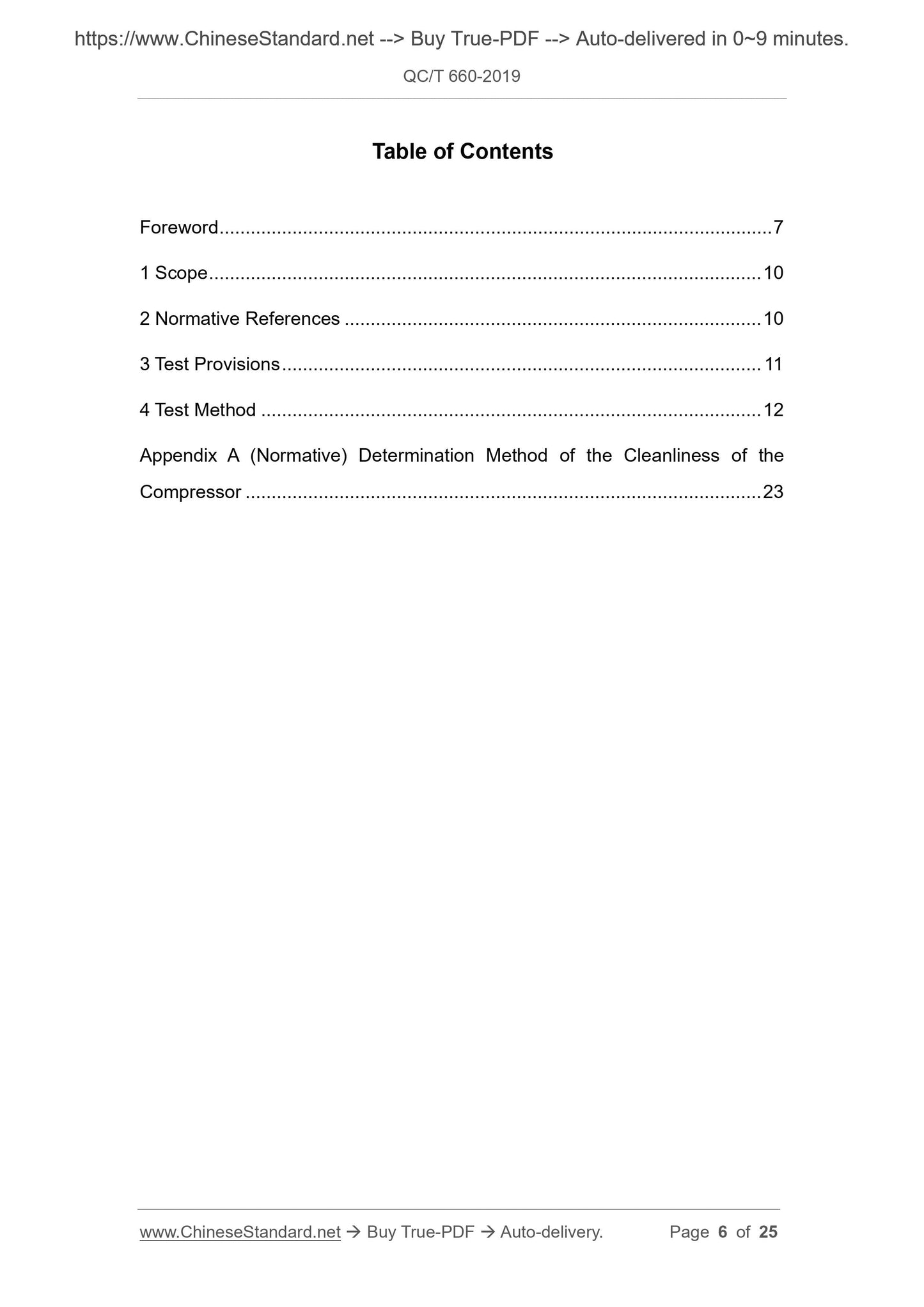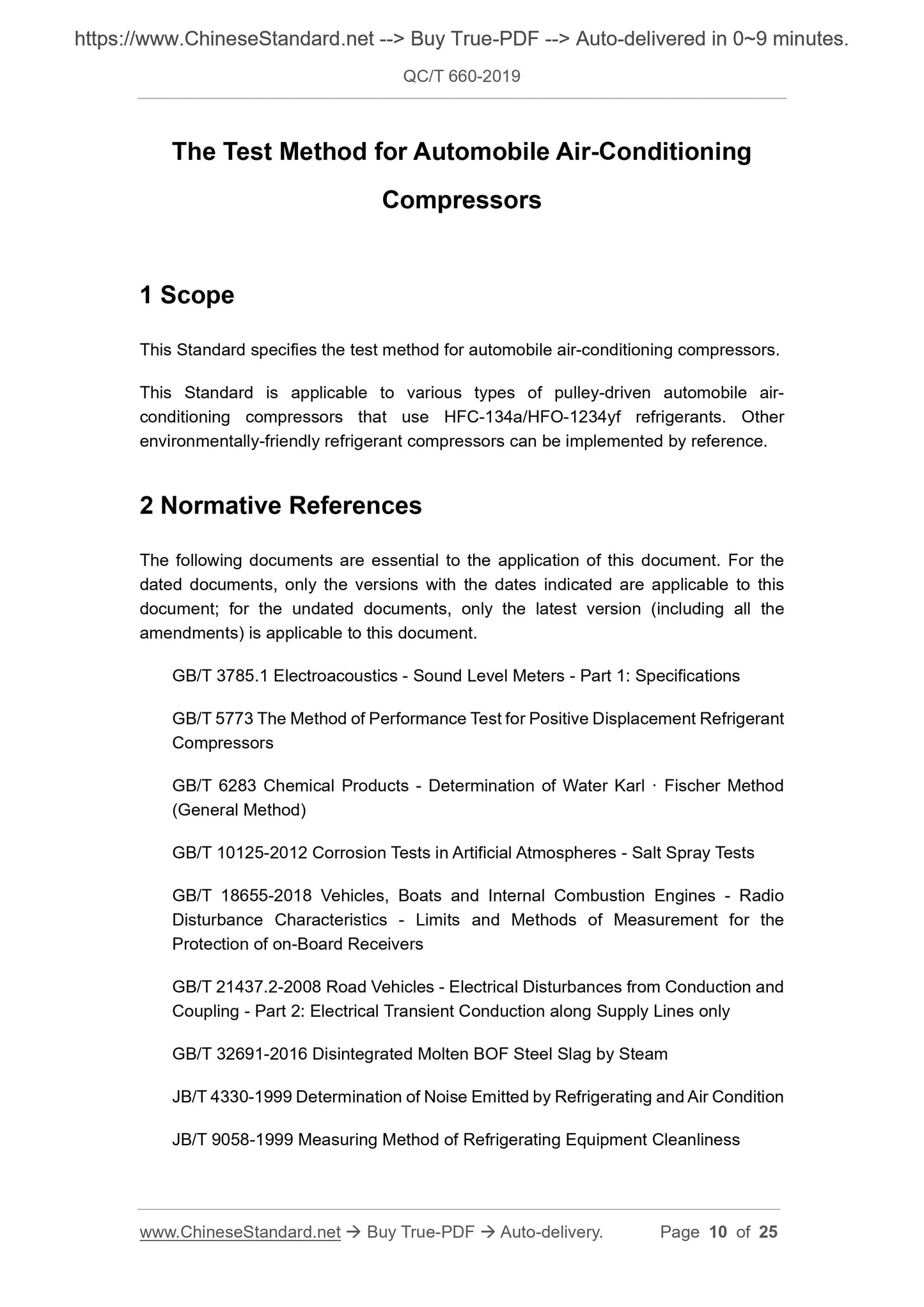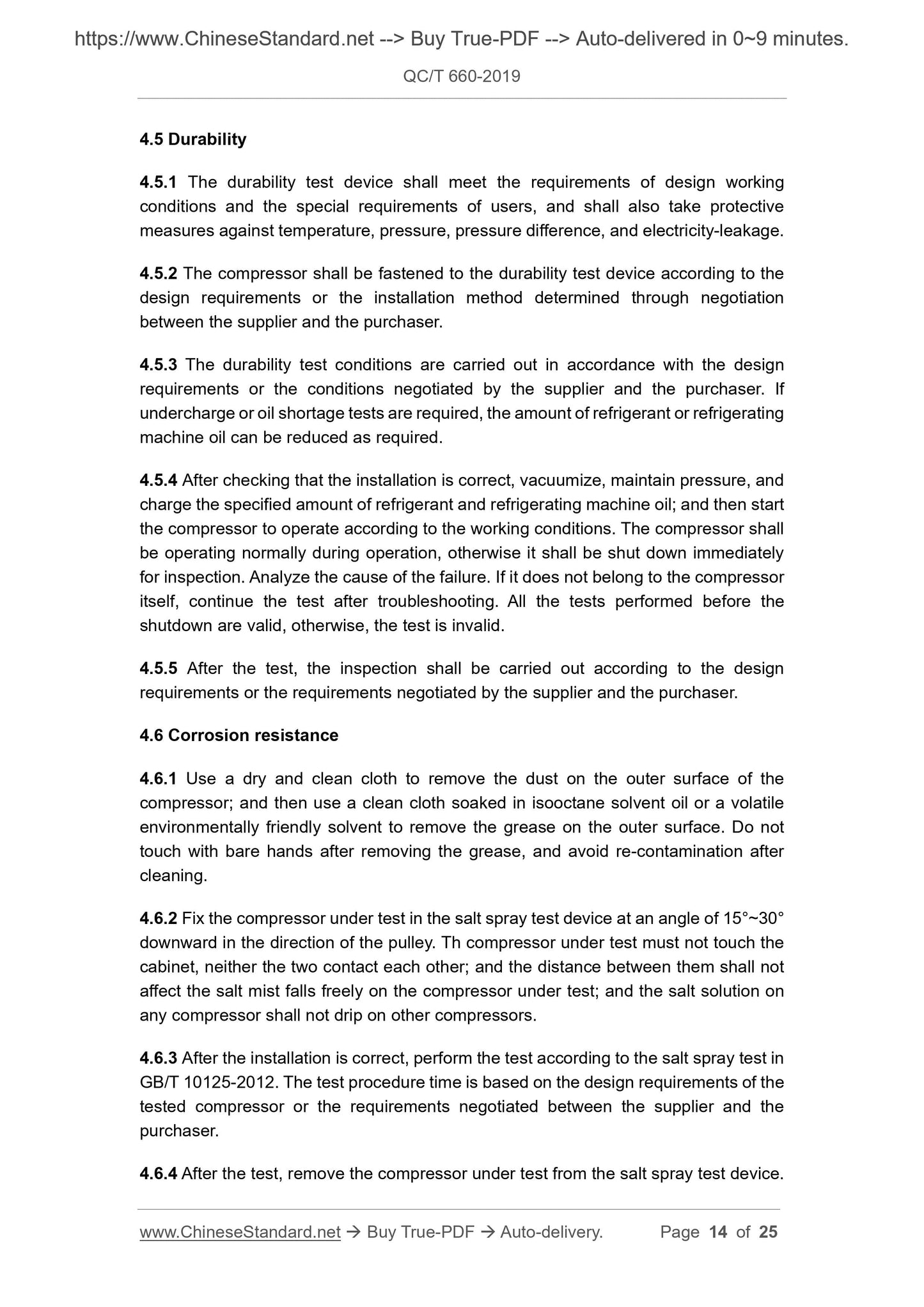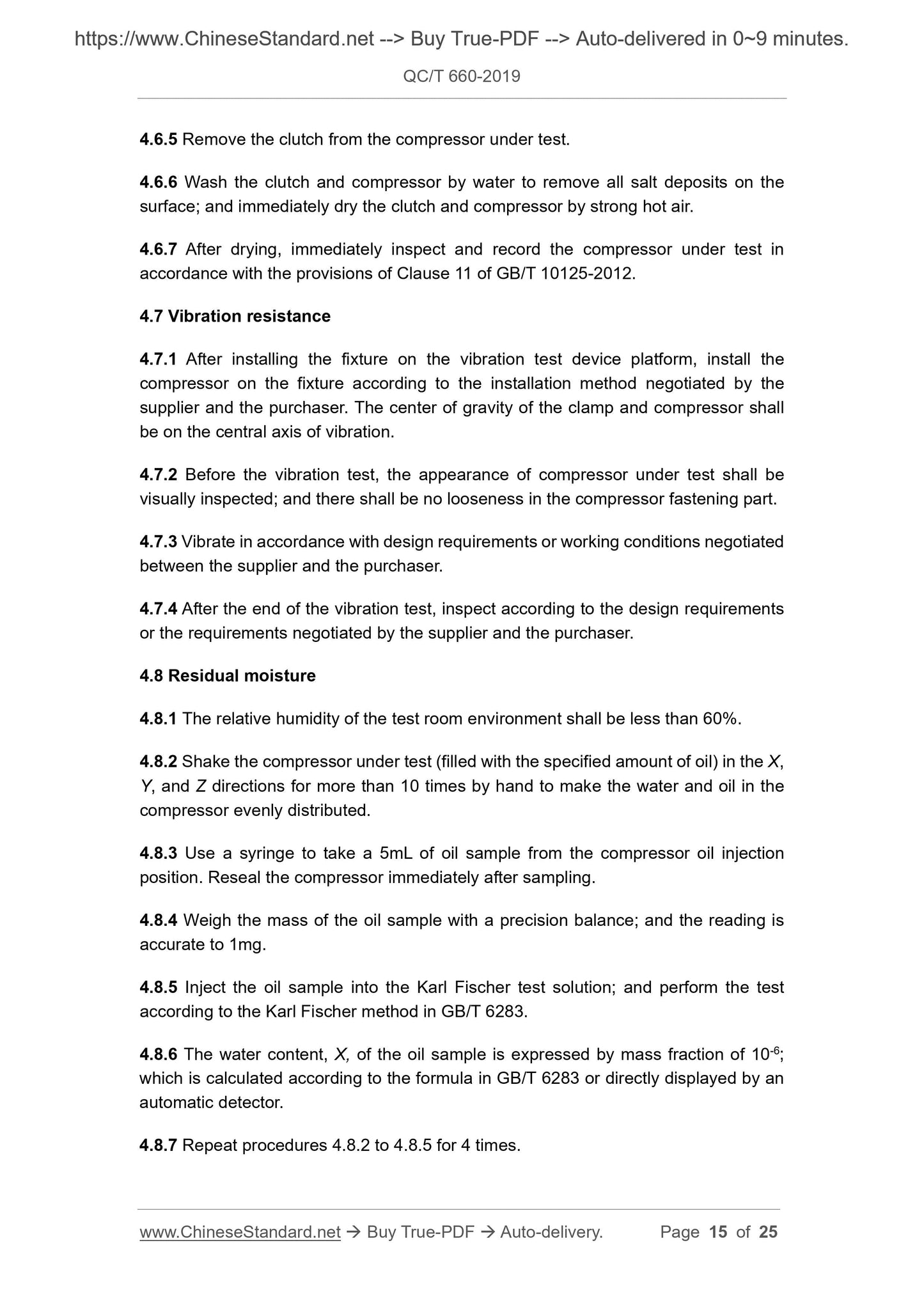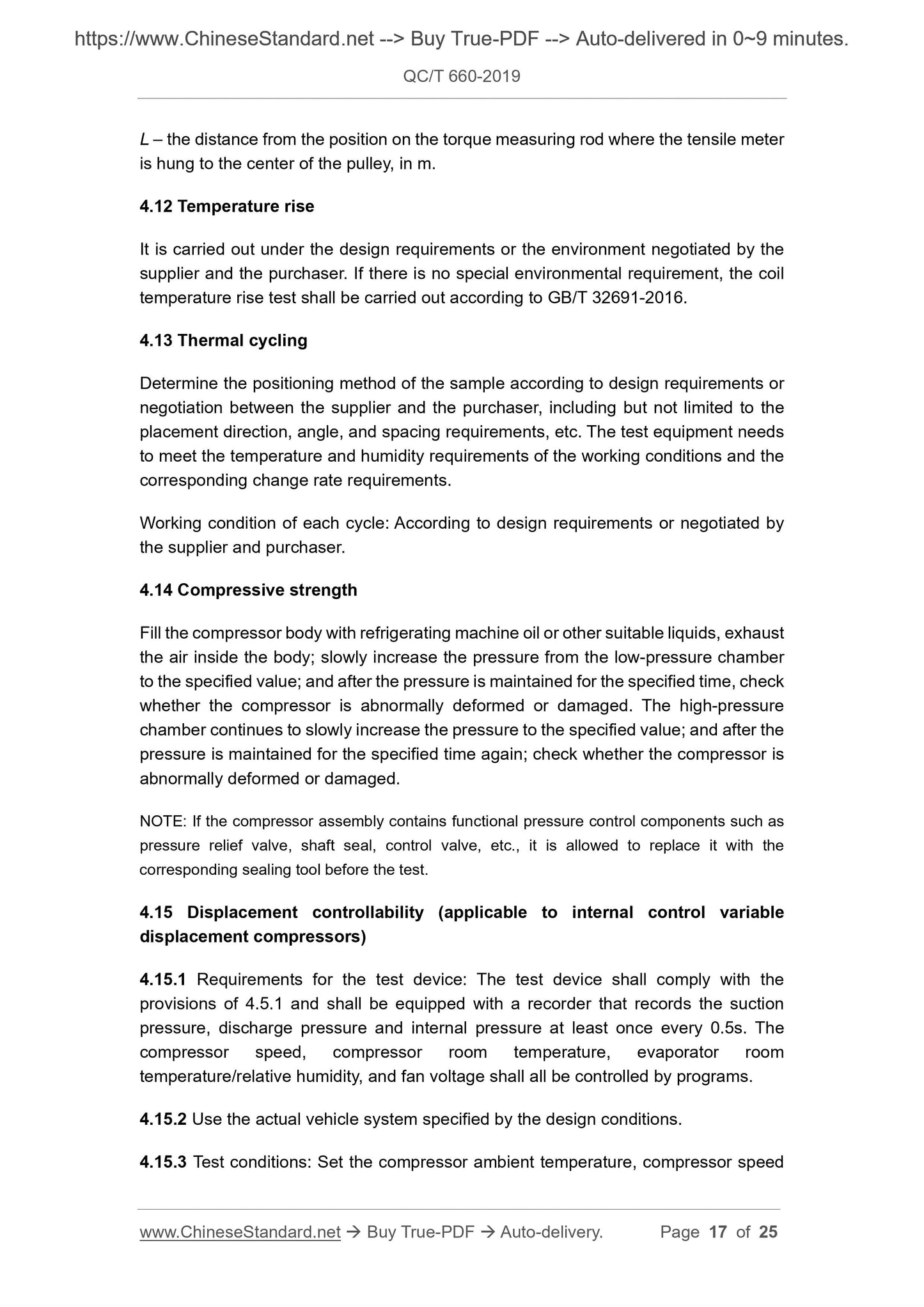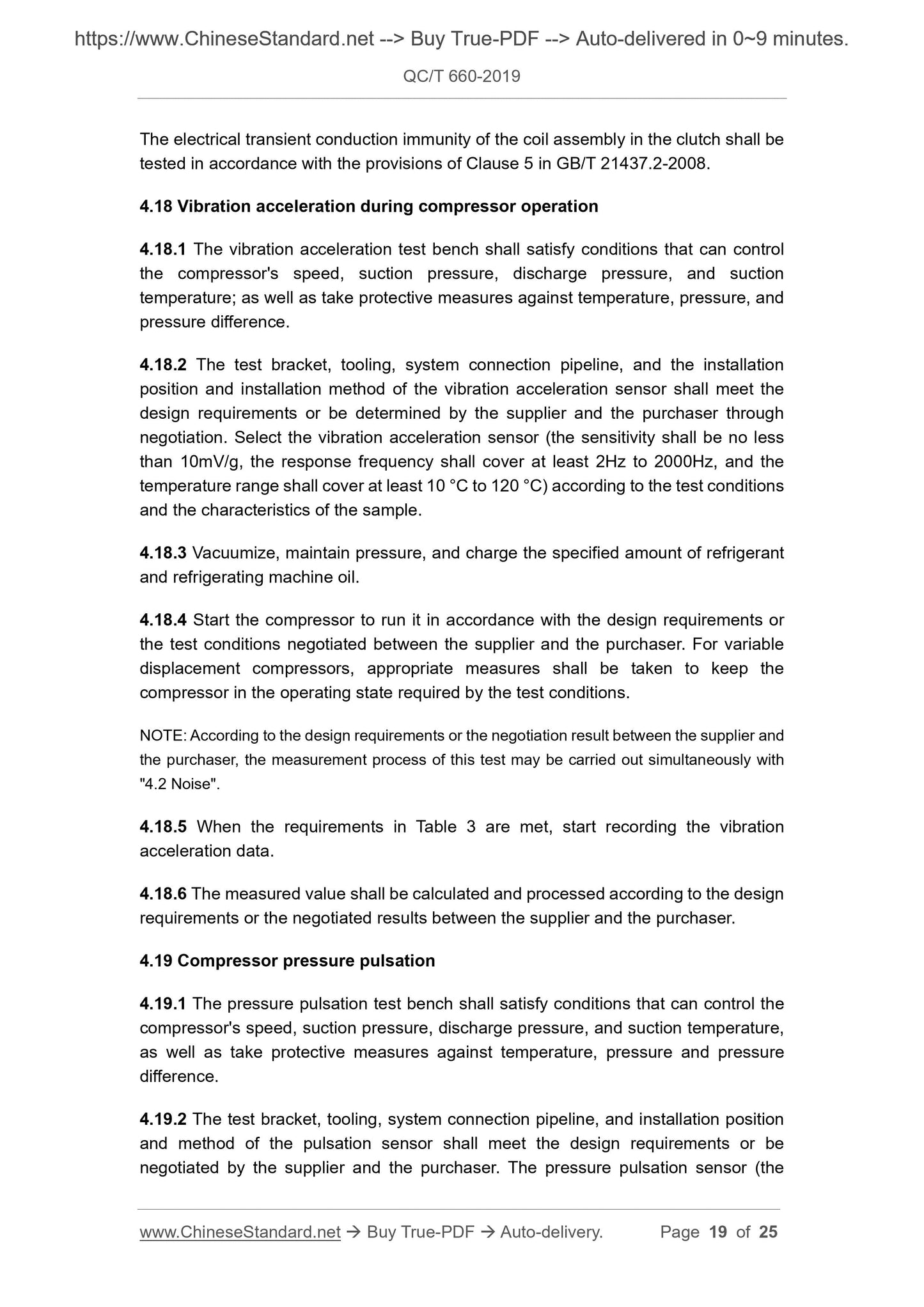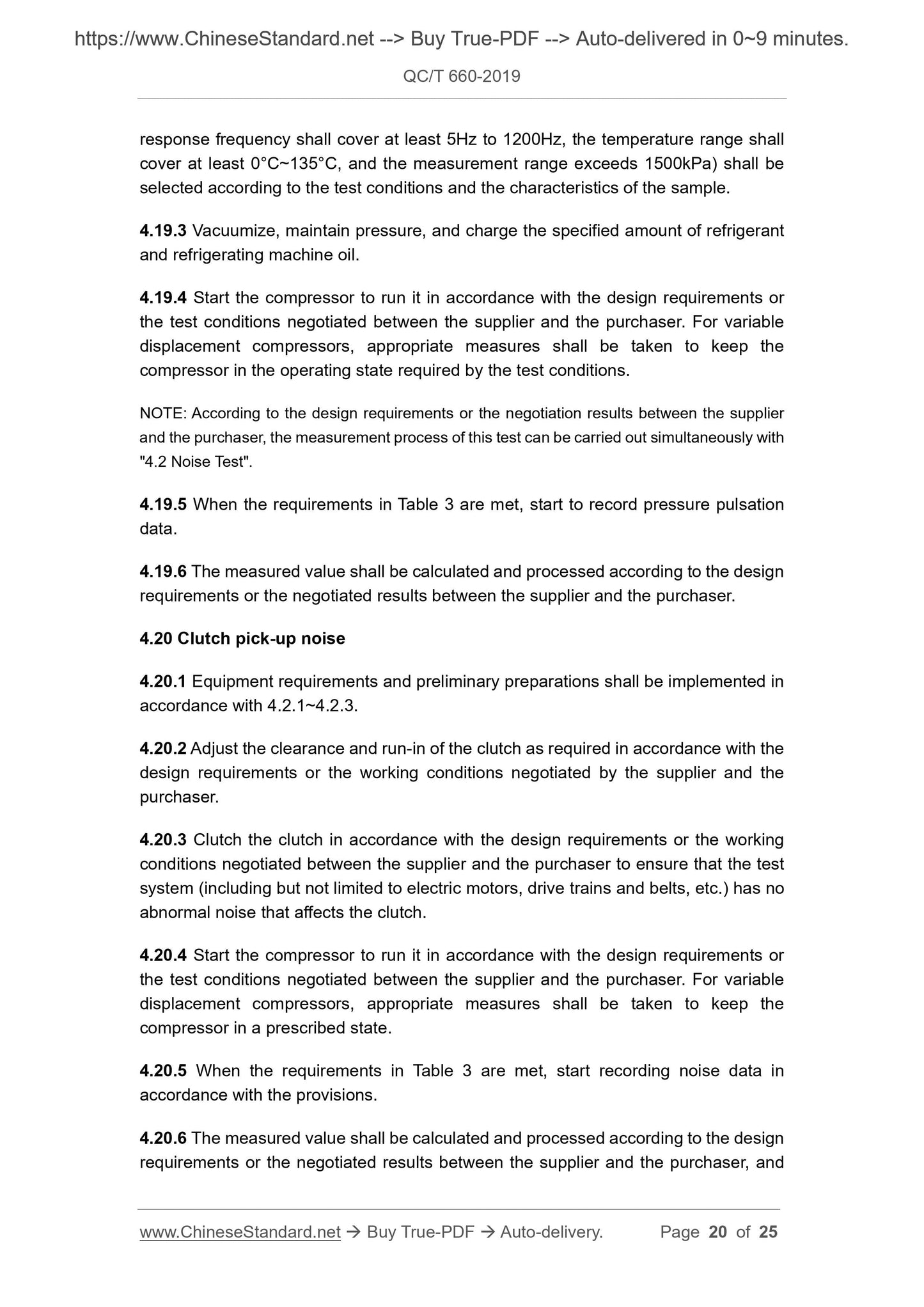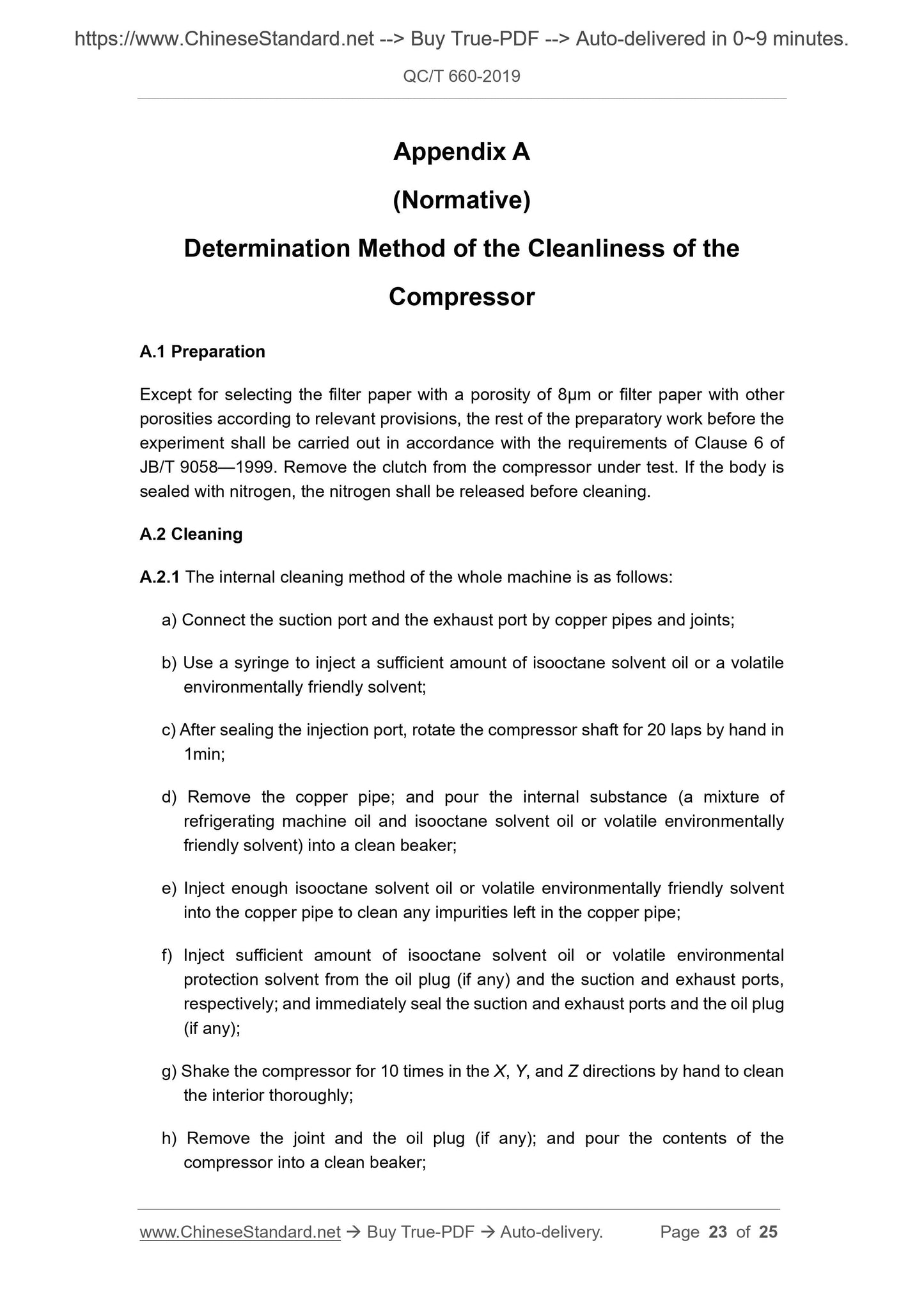1
/
of
9
www.ChineseStandard.us -- Field Test Asia Pte. Ltd.
QC/T 660-2019 English PDF (QC/T660-2019)
QC/T 660-2019 English PDF (QC/T660-2019)
Regular price
$310.00
Regular price
Sale price
$310.00
Unit price
/
per
Shipping calculated at checkout.
Couldn't load pickup availability
QC/T 660-2019: The Test Method for Automobile Air-Conditioning Compressors
Delivery: 9 seconds. Download (and Email) true-PDF + Invoice.Get Quotation: Click QC/T 660-2019 (Self-service in 1-minute)
Newer / historical versions: QC/T 660-2019
Preview True-PDF
Scope
This Standard specifies the test method for automobile air-conditioning compressors.This Standard is applicable to various types of pulley-driven automobile air-
conditioning compressors that use HFC-134a/HFO-1234yf refrigerants. Other
environmentally-friendly refrigerant compressors can be implemented by reference.
Basic Data
| Standard ID | QC/T 660-2019 (QC/T660-2019) |
| Description (Translated English) | The Test Method for Automobile Air-Conditioning Compressors |
| Sector / Industry | Automobile and Vehicle Industry Standard (Recommended) |
| Classification of Chinese Standard | T26 |
| Classification of International Standard | 43.040.60 |
| Word Count Estimation | 17,188 |
| Date of Issue | 2019 |
| Date of Implementation | 2020-04-01 |
| Issuing agency(ies) | Ministry of Industry and Information Technology |
| Summary | This standard specifies test methods for automotive air-conditioning compressors. This standard is applicable to various types of pulley-driven automotive air-conditioning compressors using HFC-134a/HFO-1234yf refrigerants, and other environmentally friendly refrigerants can be implemented by reference. |
Share
